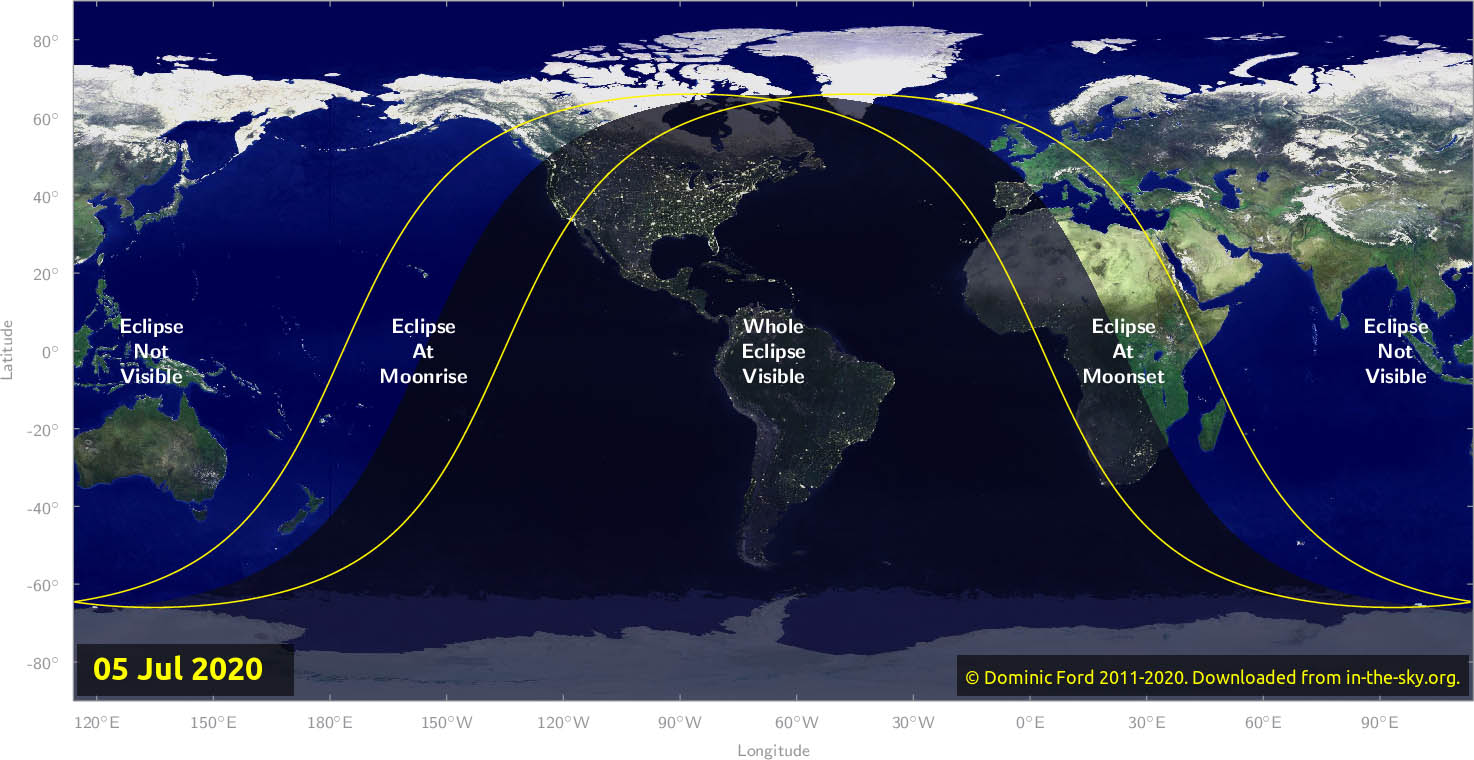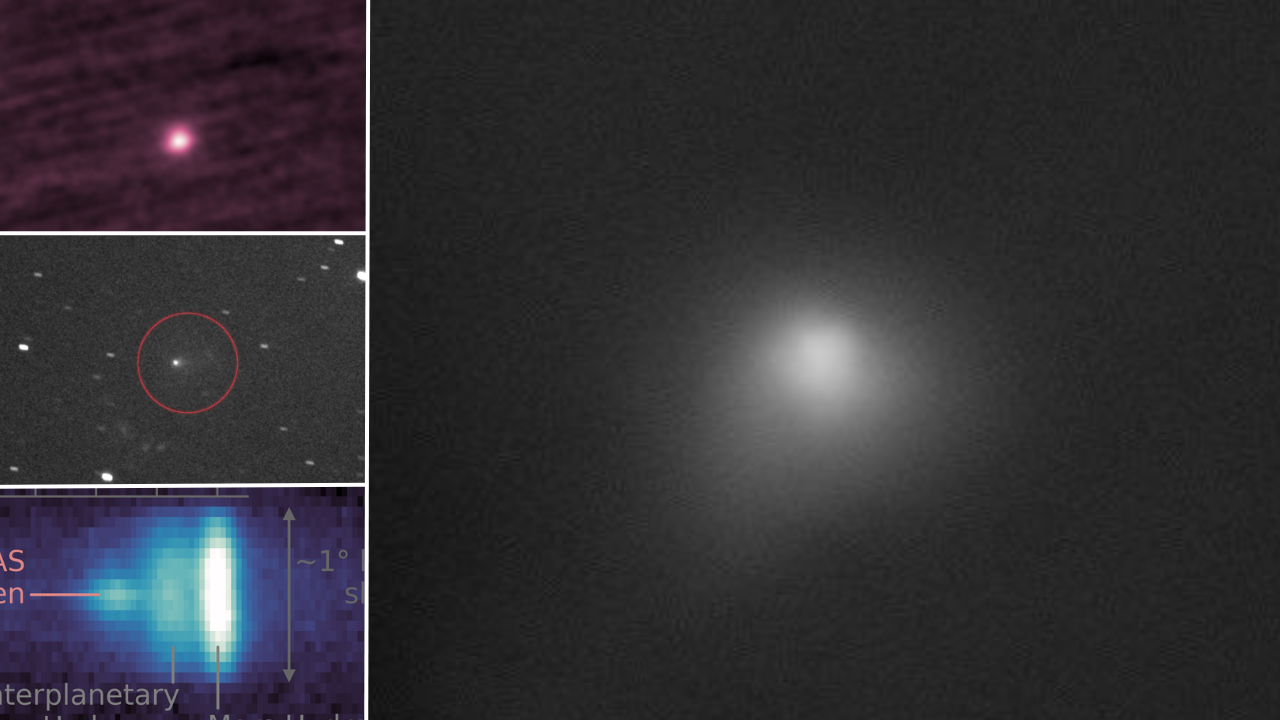The 'Buck Moon' lunar eclipse this Fourth of July will be hard to see
This penumbral eclipse is no Fourth of July fireworks display.
Update for July 5: July's full moon wowed skywatchers despite a lackluster lunar eclipse. Read our full story and see photos here!
Original story:
Skywatchers in most of the United States have the chance to see a Fourth of July lunar eclipse tonight. But the minor Independence Day eclipse will be difficult to spot and observers shouldn't expect mind-blowing views of the moon in Earth's shadow..
The July full moon will pass into the lightest part of the shadow of the Earth, which is called the penumbra. The penumbral lunar eclipse will thus see the moon's surface darken very slightly. But even if you can't see the eclipse that well, the moon is always a fun observing target.
The eclipse will start on tonight at 11:08 p.m. EDT (0308 GMT Sunday, July 5) and end on Sunday at 1:53 a.m. EDT (0553 GMT), according to In-the-Sky.org. At most, depending on your location, 35 percent of the visible moon will pass into the light shadow of the Earth. The reduced surface eclipse will make it even harder for amateurs to see the light eclipse unless you have good photographic equipment.
Related: See Jupiter, Saturn & a 'Buck Moon' lunar eclipse this Fourth of July

Penumbral eclipse begins: 11:07 p.m. EDT (0307 GMT).
Maximum eclipse: 12:30 a.m. EDT (0430 GMT)
Penumbral eclipse ends: 1:52 a.m. EDT (0553 GMT).
In general, most people don't notice the penumbral shadow projected on the moon until at least 70% of its diameter is covered," Space.com skywatching columnist Joe Rao said in our guide. "Some people who have very acute vision and better-than-average perception might notice an ever-so-slight shading when only 50% of the moon is inside the penumbra. But in the case of Saturday night, the obscuration amounts to just a tad over 35%; not enough to make any kind of visual impact."
Breaking space news, the latest updates on rocket launches, skywatching events and more!
Eclipse expert Fred Espenak gave Spaceweather.com a similar forecast. In fact, Espenak said, the lunar eclipse may be invisible.
"Because the Moon will only pass 1/3 of the way into Earth’s penumbral shadow during the July 4/5 lunar eclipse, it will NOT BE VISIBLE to the naked eye," Espenak told Spaceweather.com. "Digital photography can reveal the subtle shading if the contrast of the image is greatly increased."
Even if you can't spot the eclipse, though, there are other things in the sky that evening to enjoy.
Related: Lunar eclipse 2020 guide: When, where & how to see them
If you see the 2020 Buck Moon lunar eclipse, let us know! Send images and comments to spacephotos@space.com to share your views.
The eclipse will start just 14 minutes before the full moon, called the Buck Moon or the Thunder Moon, according to NASA's SkyCal. The moon will also be within a few degrees of Jupiter, and Mars will be visible in some regions in the constellation Pisces, said Rao. A little less than 14 hours after the eclipse ends on Sunday, the moon and Jupiter will be conjunction at 5:38 p.m. EDT (2138 GMT), shining less than two degrees apart in Earth's sky.
Most of the United States will see the eclipse, with some regions viewing the moon at the apex of its path across the sky and out of the range of the worst of light pollution. Alaska is excluded, however, and those in western parts of the southern 49 states will only see part of the show. Regions seeing at least part of the eclipse around the world include South/West Europe, much of Africa, much of North America, South America, the Pacific Ocean, the Atlantic Ocean, the Indian Ocean and Antarctica, according to TimeandDate.com.
This penumbral event rounds out a set of three eclipses in the past month. A "ring of fire" solar eclipse happened in parts of Africa and Asia on June 21, and another penumbral lunar eclipse occurred on June 5.
Americans keen to try watching a more visible penumbral eclipse can try their luck during the predawn hours of Nov. 30, when about four-fifths of the moon's diameter will be inside the penumbra, Rao said.
There are no webcasts listed so far for the Independence Day eclipse, but we will add links if any become available.
Editor's Note: If you snap a photo of night sky picture and would like to share it with Space.com's readers, send your photos, comments, and your name and location to spacephotos@space.com.

Elizabeth Howell (she/her), Ph.D., was a staff writer in the spaceflight channel between 2022 and 2024 specializing in Canadian space news. She was contributing writer for Space.com for 10 years from 2012 to 2024. Elizabeth's reporting includes multiple exclusives with the White House, leading world coverage about a lost-and-found space tomato on the International Space Station, witnessing five human spaceflight launches on two continents, flying parabolic, working inside a spacesuit, and participating in a simulated Mars mission. Her latest book, "Why Am I Taller?" (ECW Press, 2022) is co-written with astronaut Dave Williams.


